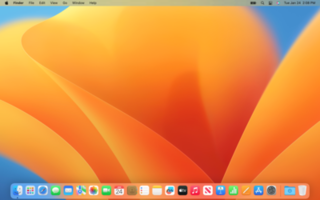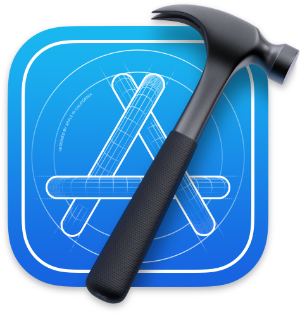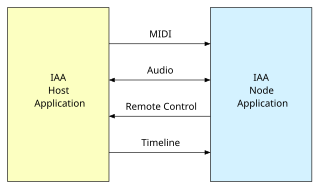
macOS is an operating system developed and marketed by Apple Inc. since 2001. It is the primary operating system for Apple's Mac computers. Within the market of desktop and laptop computers, it is the second most widely used desktop OS, after Microsoft Windows and ahead of Linux.
QuickTime is a discontinued extensible multimedia architecture created by Apple, which supports playing, streaming, encoding, and transcoding a variety of digital media formats. The term QuickTime also refers to the QuickTime Player front-end media player application, which is built-into macOS, and was available for download on Windows until 2016.
Darwin is the core Unix operating system of macOS, iOS, watchOS, tvOS, iPadOS, visionOS, and bridgeOS. It previously existed as an independent open-source operating system, first released by Apple Inc. in 2000. It is composed of code derived from NeXTSTEP, BSD, Mach, and other free software projects' code, as well as code developed by Apple.
Carbon was one of two primary C-based application programming interfaces (APIs) developed by Apple for the macOS operating system. Carbon provided a good degree of backward compatibility for programs that ran on Mac OS 8 and 9. Developers could use the Carbon APIs to port (“carbonize”) their “classic” Mac applications and software to the Mac OS X platform with little effort, compared to porting the app to the entirely different Cocoa system, which originated in OPENSTEP. With the release of macOS 10.15 Catalina, the Carbon API was officially discontinued and removed, leaving Cocoa as the sole primary API for developing macOS applications.

ActiveX is a deprecated software framework created by Microsoft that adapts its earlier Component Object Model (COM) and Object Linking and Embedding (OLE) technologies for content downloaded from a network, particularly from the World Wide Web. Microsoft introduced ActiveX in 1996. In principle, ActiveX is not dependent on Microsoft Windows operating systems, but in practice, most ActiveX controls only run on Windows. Most also require the client to be running on an x86-based computer because ActiveX controls contain compiled code.
The history of macOS, Apple's current Mac operating system formerly named Mac OS X until 2011 and then OS X until 2016, began with the company's project to replace its "classic" Mac OS. That system, up to and including its final release Mac OS 9, was a direct descendant of the operating system Apple had used in its Mac computers since their introduction in 1984. However, the current macOS is a UNIX operating system built on technology that had been developed at NeXT from the 1980s until Apple purchased the company in early 1997.

Xcode is Apple's integrated development environment (IDE) for macOS, used to develop software for macOS, iOS, iPadOS, watchOS, tvOS, and visionOS. It was initially released in late 2003; the latest stable release is version 15, released on September 18, 2023, and is available free of charge via the Mac App Store and the Apple Developer website. Registered developers can also download preview releases and prior versions of the suite through the Apple Developer website. Xcode includes command-line tools which enable UNIX-style development via the Terminal app in macOS. They can also be downloaded and installed without the GUI.

Rosegarden is a free software digital audio workstation program developed for Linux with ALSA, JACK and Qt4. It acts as an audio and MIDI sequencer, scorewriter and musical composition and editing tool. It is intended to be a free and alternative to such applications as Cubase.
Copland is an operating system developed by Apple for Macintosh computers between 1994 and 1996 but never commercially released. It was intended to be released as System 8, and later, Mac OS 8. Planned as a modern successor to the aging System 7, Copland introduced protected memory, preemptive multitasking, and several new underlying operating system features, while retaining compatibility with existing Mac applications. Copland's tentatively planned successor, codenamed Gershwin, was intended to add more advanced features such as application-level multithreading.
Star Trek is the code name that was given to a secret prototype project, running a port of Macintosh System 7 and its applications on Intel-compatible x86 personal computers. The project, starting in February 1992, was conceived in collaboration between Apple Computer, who provided the majority of engineers, and Novell, who at the time was one of the leaders of cross-platform file-servers. The plan was that Novell would market the resulting OS as a challenge to Microsoft Windows, but the project was discontinued in 1993 and never released, although components were reused in other projects. The project was named after the Star Trek science fiction franchise with the slogan "To boldly go where no Mac has gone before".
PlainTalk is the collective name for several speech synthesis (MacinTalk) and speech recognition technologies developed by Apple Inc. In 1990, Apple invested a lot of work and money in speech recognition technology, hiring many researchers in the field. The result was "PlainTalk", released with the AV models in the Macintosh Quadra series from 1993. It was made a standard system component in System 7.1.2, and has since been shipped on all PowerPC and some 68k Macintoshes.
Core Image is a pixel-accurate, near-realtime, non-destructive image processing technology in Mac OS X. Implemented as part of the QuartzCore framework of Mac OS X 10.4 and later, Core Image provides a plugin-based architecture for applying filters and effects within the Quartz graphics rendering layer. The framework was later added to iOS in iOS 5.
Digital Performer is a digital audio workstation and music sequencer software package published by Mark of the Unicorn (MOTU) of Cambridge, Massachusetts for the Apple Macintosh and Microsoft Windows platforms.

Logic Pro is a proprietary digital audio workstation (DAW) and MIDI sequencer software application for the macOS platform developed by Apple Inc. It was originally created in the early 1990s as Notator Logic, or Logic, by German software developer C-Lab which later went by Emagic. Apple acquired Emagic in 2002 and renamed Logic to Logic Pro. It is the second most popular DAW – after Ableton Live – according to a survey conducted in 2015.

Rhapsody is an operating system that was developed by Apple Computer after its purchase of NeXT in the late 1990s. It is the fifth major release of the Mach-based operating system that was developed at NeXT in the late 1980s, previously called OPENSTEP and NEXTSTEP. Rhapsody was targeted to developers for a transition period between the Classic Mac OS and Mac OS X. Rhapsody represented a new and exploratory strategy for Apple, more than an operating system, and runs on x86-based PCs and on Power Macintosh.

The architecture of macOS describes the layers of the operating system that is the culmination of Apple Inc.'s decade-long research and development process to replace the classic Mac OS.
Two major families of Mac operating systems were developed by Apple Inc.

BootX is a software-based bootloader designed and developed by Apple Inc. for use on the company's Macintosh computer range. BootX is used to prepare the computer for use, by loading all required device drivers and then starting-up Mac OS X by booting the kernel on all PowerPC Macintoshes running the Mac OS X 10.2 operating system or later versions.

Inter-App Audio (IAA) is a deprecated technology developed by Apple Inc. which routes audio and MIDI signals between applications on the iOS mobile operating system. The technology was first introduced in 2013 in iOS 7 and deprecated in 2019 with the release of iOS 13.






